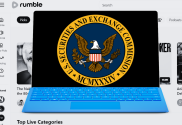Google recently announced significant new requirements for senders of bulk email to Gmail users, aiming to cut down on spam and make inboxes more secure.
According to an Oct. 3 announcement, the new policies will take effect in February 2024 and will target bulk senders — those who send more than 5,000 messages per day to Gmail addresses. These high-volume senders must authenticate their emails, enable one-click unsubscribes, and stay under a defined spam threshold.
Email authentication is a key focus. Google says too many major senders fail to properly secure their systems, leaving them vulnerable to spoofing by attackers. Spoofing is when someone disguises their email to make it look like it’s coming from a trusted source. Authentication uses protocols like DMARC to verify the actual sender of an email. The new authentication rules will attempt to close spoofing loopholes and confirm senders are who they claim to be.
The unsubscribe requirement makes it easier for users to opt out of commercial email. Senders must process unsubscribes within two days. This ensures users don’t keep getting unwanted marketing messages. Google is basing the rules on open standards like LISTUNSUB so all email providers can benefit from faster unsubscribes.
Finally, bulk senders must stay under a maximum spam rate to avoid bombarding Gmail users. Google will enforce a threshold on the percentage of messages sent that end up marked as spam. This spam filter is an industry-first, according to Google. It provides another layer of protection against unwanted email.
Google says the changes reflect “email hygiene” best practices that many ethical senders already follow. The company is sharing guidance to help other significant senders upgrade their systems before enforcement starts in 20 months.
The goal is to keep inboxes clutter-free while blocking more unwanted messages. Google plans to collaborate with the email community to fine-tune protections and stop evolving threats.





